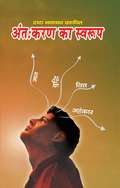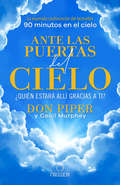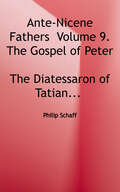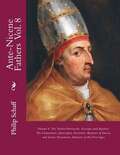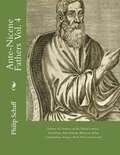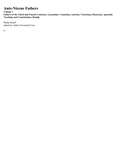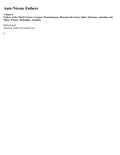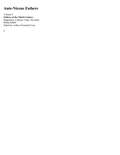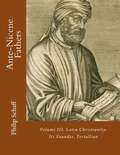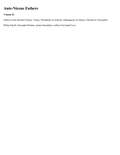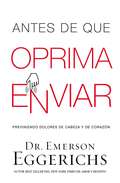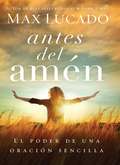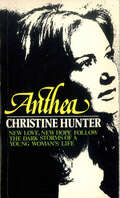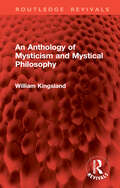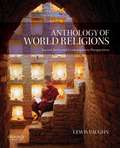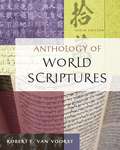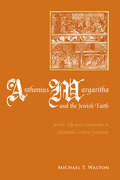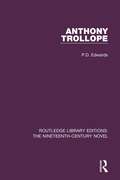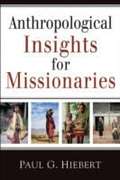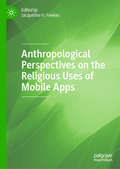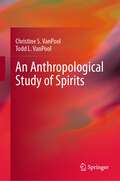- Table View
- List View
Antagonists in the Church: How to Identify and Deal With Destructive Conflict
by Kenneth C. HaugkExcellent book on dealing with conflict in the church.
Antahkaran Ka Swaroop: अंतकरण का स्वरूप
by Dada Bhagwanअंत: करण के चार अंग हैं : मन, बुद्धि, चित्त और अहंकार| हरेक का कार्य अलग अलग है| एक समय में उनमे से एक ही कार्यन्विंत होता है| मन क्या है? मन ग्रंथिओं का बना हुआ है| पिछले जन्म में अज्ञानता से जिसमे राग द्वेष किये, उनके परमाणु खींचे और उनका संग्रह होकर ग्रंथि हो गयी| वह ग्रंथि इस जन्म में फूटती है तो उसे विचार कहा जाता है| विचार डिस्चार्ज मन है| विचार आता है उस समय अहंकार उसमे तन्मयाकार हो जाता है| यदि वह तन्मयाकार नहीं हुआ हो तो डिस्चार्ज होकर मन खाली हो जाता है| जिसके ज्यादा विचार उसकी मनोग्रंथि बड़ी होती है| अंत: करण का दूसरा अंग है, चित्त | चित्त का स्वभाव भटकना है| मन कभी नहीं भटकता| चित्त सुख खोजने के लिए भटकता रहता है| किन्तु वह सारे भौतिक सुख विनाशी होने की वजह से उसकी खोज का अंत ही नहीं आता| इसलिए वह भटकता रहता है| जब आत्मसुख मिलता है तभी उसके भटकन का अंत आता है| चित्त ज्ञान दर्शन का बना हुआ है| अशुद्ध ज्ञान+ दर्शन यानी अशुद्ध चित्त, संसारी चित्त और शुद्ध ज्ञान+ दर्शन यानी शुद्ध चित्त, यानी शुद्ध आत्मा| बुद्धि, आत्मा की इनडायरेक्ट लाइट है और प्रज्ञा डायरेक्ट लाइट है| बुद्धि हमेशा संसारी मुनाफा नुक्सान बताती है और प्रज्ञा हमेशा मोक्ष का ही रास्ता बताती है| इन्द्रियों के ऊपर मन, मन के ऊपर बुद्धि, बुद्धि के ऊपर अहंकार और इन सबके ऊपर आत्मा है| बुद्धि,वह मन और चित्त दोनों में से एक का सुनकर निर्णय करती है और अहंकार अँधा होने से बुद्धि के कहे अनुसार हस्ताक्षर कर देता है| उसके हस्ताक्षर होते ही वह कार्य बाह्यकरण में होता है| अहंकार करने वाला भोक्ता होता है, वह स्वयं कुछ नहीं करता, वह सिर्फ मानता है कि मैंने किया| और वह उसी समय कर्त्ता हो जाता है| फिर उसे भोक्ता होना ही होता है| संयोग करता हैं, मैं नहीं, यह ज्ञान होते ही अकर्ता होता है, फिर उसके कर्म चार्ज नहीं होते| अंत: करण की सारी क्रियाएँ मैकेनिकल हैं| इसमें आत्मा को कुछ करना नहीं होता| आत्मा तो सिर्फ ज्ञाता द्रष्टा और परमानंदी है| केवल ज्ञानीपुरुष ही अपने अंत: करण से अलग रहते हैं| आत्मा में ही रह कर उसका यथार्थ वर्णन कर सकते हैं| ज्ञानीपुरुष संपूज्य श्री दादाश्री ने अंत: करण का बहुत ही सुन्दर और स्पष्ट वर्णन किया है|
Ante las puertas del cielo
by Don Piper¡Este es el libro que tanto has estado esperando! Retomando el lugar donde nos dejó el bestseller 90 minutos en el cielo / 90 Minutes in Heaven, Don Piper nos revela por primera vez los detalles íntimos de las personas que lo recibieron en las puertas del paraíso y el profundo impacto que ellos tuvieron en su fe aquí en la tierra. En esta increíble continuación de su bestseller que ha vendido más de ocho millones de ejemplares, Don Piper comparte historias nunca antes contadas sobre sus encuentros con personas que lo recibieron en las puertas del paraíso, y ofrece valiosos detalles sobre la mejor manera de vivir nuestras vidas aquí en la tierra. El inolvidable relato de Don Piper y el horrible accidente automovilístico que le quitó la vida, y lo que sucedió después, han cautivado a millones de lectores. Mientras compartía su historia en los años posteriores, Piper no sólo se dio cuenta de que tenía más que contar, sino que aún tenía que compartir los detalles más sagrados e íntimos de su tiempo en el cielo y acerca de las personas que lo recibieron al llegar. "Siempre que tenía presentaciones las personas se iban con una necesidad de querer saber más", comenta en el libro. En este nuevo libro, Piper invita a los lectores a compartir su experiencia en un nivel más profundo; en el libro incluye encuentros nunca antes contados con las personas que lo recibieron en el cielo, y que lo guiaron en el viaje para entrar al hogar celestial de Dios.
Ante-nicene Fathers: Volume 9. The Gospel of Peter, The Diatessaron of Tatian, The Apocalypse of Peter, The Vision of Paul, The Apocalypses of The Virgin and Sedrach and More (Ante-nicene Fathers Ser.)
by Philip SchaffVolume 9: The Gospel of Peter, The Diatessaron of Tatian, The Apocalypse of Peter, The Vision of Paul, The Apocalypse of the Virgin, The Apocalypse of Sedrach, The Testament of Abraham, The Acts of Xanthippe and Polyxena, The Narrative of Zosimus, The Epistles of Clement, The Apology of Aristides the Philosopher, The Passion of the Scillitan Martyrs, Epistle to Gregory and Origen's Commentary on the Gospel of John, Origen's Commentary on the Gospel of Matthew
Ante-nicene Fathers: Volume 8. The Twelve Patriarchs, Excerpts And Epistles, The Clementina, Apocrypha, Decretals, Memoirs Of Edessa And Syriac Documents, Remains Of The First Ages (Ante-nicene Fathers Ser. #8)
by Philip Schaff Arthur CoxeVolume 8: The Testaments of the Twelve Patriarchs Excerpts of Theodotus Two Epistles Concerning Virginity Pseudo-Clementine Literature Apocrypha of the New Testament The Decretals Memoirs of Edessa And Other Ancient Syriac Documents Remains of the Second and Third Centuries
Ante-nicene Fathers: Volume IV: Fathers Of The Third Century: Tertullian, Part Fourth, Minucius Felix, Commodian, Origen, Parts First And Second (Ante-nicene Fathers Ser. #4)
by Philip Schaff Arthur CoxeVolume IV. Fathers of the Third Century: Tertullian, Part Fourth, Minucius Felix, Commodian, Origen, Parts First and Second
Ante-nicene Fathers: Volume 7. Fathers Of The Third And Fourth Centuries: Lactantius, Venantius, Asterius, Victorinus, Dionysius, Apostolic Teaching And Constitutions, Homily (Ante-nicene Fathers Ser.)
by Philip Schaff Arthur CoxeThe genius of Lactantius suffers a sad transformation when unclothed of vernacular and stripped of the idiomatic graces of his style. But the intelligent reader will be sure to compare this translation with the Latinity of the original, and to recur to it often for the enjoyment of its charming rhetoric, and of the high sentiment it so nobly enforces and adorns. This volume will be the favourite of the series with many. The writings of the Christian Tully alone make up more than half of its contents; and it is supremely refreshing to reach, at last, an author who chronicles the triumph of the Gospel [1] over "Herod and Pontius Pilate;" over the heathen in their "rage," and the people in their "vain imaginings;" over "the kings of the earth who stood up, and the rulers who were gathered together against the Lord and against His Christ."
Ante-nicene Fathers: Volume 6. Fathers Of The Third Century: Gregory Thaumaturgus, Dionysius The Great, Julius Africanus, Anatolius And Minor Writers, Methodius, Arnobius (Ante-nicene Fathers Ser.)
by Philip Schaff Arthur CoxeIn this volume a mass of fragmentary material [1] has been reduced to method, and so harmonized as to present an integral result. The student has before him, therefore, (1) a view of the Christian Church emerging from the ten persecutions; (2) a survey of its condition on the eve of that great event, the (nominal) conversion of the empire; (3) an introduction to the era of Athanasius; and (4) a history of events that led to the calling of the first Catholic council at Nicæa.
Ante-nicene Fathers: Volume 5. Fathers Of The Third Century: Hippolytus, Cyprian, Caius, Novatian (Ante-nicene Fathers Ser.)
by Philip Schaff Arthur CoxeThis fifth volume will be found a work complete in itself, simplex et Unum. At first, indeed, it might look otherwise. The formation of Latin Christianity in the school of North Africa seems interrupted by the interpolation, between Tertullian and his great pupil Cyprian, of a Western bishop and doctor, who writes in Greek. A little reflection, however, will suggest to the thoughtful student, that, even if our chronological plan admitted of it, we should divest the works of Cyprian of a very great advantage should we deprive them of the new and all-important light shed upon Cyprian and his conflicts with Stephen by the discovery of the Philosophumena of Hippolytus.
Ante-nicene Fathers: Volume III. Latin Christianity: Its Founder, Tertullian (Ante-nicene Fathers Ser. #3)
by Philip Schaff Alexander Roberts James Donaldson Arthur CoxeVolume III. Latin Christianity: Its Founder, Tertullian
Ante-nicene Fathers: Volume I. Apostolic Fathers With Justin Martyr And Irenaeus (Ante-nicene Fathers Ser.)
by Philip Schaff Alexander Roberts James Donaldson Arthur CoxeThis volume, containing the equivalent of three volumes of the Edinburgh series of the Ante-Nicene Fathers, will be found a library somewhat complete in itself. The Apostolic Fathers and those associated with them in the third generation, are here placed together in a handbook, which, with the inestimable Scriptures, supplies a succinct autobiography of the Spouse of Christ for the first two centuries. No Christian scholar has ever before possessed, in faithful versions of such compact form, a supplement so essential to the right understanding of the New Testament itself. It is a volume indispensable to all scholars, and to every library, private or public, in this country.
Ante-nicene Fathers: Volume II. Fathers Of The Second Century: Tatian, Theophilus Of Antioch, Athenagoras Of Athens, Clement Of Alexandria (Ante-nicene Fathers Ser.)
by Philip Schaff Alexander Roberts James Donaldson Arthur CoxeThe series was originally published between 1867 and 1873 by the Presbyterian publishing house T. & T. Clark in Edinburgh under the title Ante-Nicene Christian Library (ANCL), as a response to the Oxford movement's Library of the Fathers which was perceived as too Roman Catholic. The volumes were edited by Rev. Alexander Roberts and James Donaldson. This series was available by subscription, but the editors were unable to interest enough subscribers to commission a translation of the homilies of Origen.
Antes de que oprima enviar: Previniendo dolores de cabeza y de corazón
by Dr Emerson EggerichsCada día tenemos el potencial de cometer errores al hablar y al escribir. Este libro trata de evitar los malos entendidos y facilitar compresión en la comunicación. Este libro trata acerca de cuatro cosas que debemos considerar antes de comunicar.¿Cuándo aprenderemos? A diario encontramos nuevos casos en los que las personas actuan antes de pensar solo para luego arrepentirse. Las redes sociales lo dicen: ¡se trata de socializar! Los métodos de comunicación actuales permiten la transmisión potencial de cualquier cosa desde Pekin, Illinois a Pekín, China. Pero no sólo los fanáticos de Twitter pueden tener este problema. Cada uno de nosotros es capaz de caer presa de esta creciente plaga.Tenemos el potencial de cometer errores al hablar y al escribir. Es el mismo caso si hablamos con un extraño en la carnicería, o por teléfono con nuestra madre, o si enviamos un correo electrónico a un colega; podemos tener y en efecto tenemos problemas de comunicación y las personas podrían percibir una idea errónea. Cuando no pausamos lo suficiente para pensar antes de hablar o escribir, a menudo se produce un malentendido y causa una discusión. Terminamos siendo la persona que dice, «¿Conoce esa parte del cerebro que nos impide decir algo que no debemos? Bien, yo no la tengo».Este libro trata de evitar los malos entendidos y facilitar la compresión en la comunicación. Dicho de otra manera, trata de anticiparse a que las personas reciban la idea equivocada y les permita obtener la idea correcta!Todos necesitamos trabajar en esta área de forma más intencional. Partiendo de ejemplos externos a conflictos internos, este libro trata las cuatro cosas que debemos pensar antes de comunicar. Es sabio hacernos las siguiente preguntas antes de decir o escribir:• ¿Es verdad?• ¿Es cordial?• ¿Es necesario?• ¿Es claro?Cuando respondemos honestamente a estas cuatro preguntas, pensamos sabiamente antes de hablar. Pero para una exploración más profunda, necesitamos conocer más acerca de nosotros mismos y descubrir por qué consciente y subconscientemente caemos en estos problemas de comunicación en un inicio. Puede que nos soprenda lo que descubramos sobre nosotros mismos. ¿Comenzamos?
Antes del amén
by Max LucadoTodosoramos... un poco.Oramospor mantenernos sobrios, centrados o solventes. Cuando el tumor parece maligno.Cuando el dinero se acaba antes de que termine el mes. Cuando el matrimonio sedesmorona. Oramos.¿Peroacaso no nos gustaría orar más? ¿Mejor? ¿Con más intensidad? ¿Con más fuego, feo fervor?Sinembargo, tenemos hijos que alimentar, facturas que pagar, plazos de entrega porcumplir. El calendario se abalanza sobre nuestras buenas intenciones como untigre sobre un conejo. ¿Y qué me dices de los altibajos en nuestra historia deoración? Palabras inciertas. Expectativassin alcanzar. Peticiones sin respuesta.Nosomos los primeros en tener problemas con la oración. Los primeros seguidoresde Jesús también necesitaron orientación sobre la oración. De hecho, el únicomanual de instrucción que pidieron fue sobre la oración.YJesús les dio una oración. No un sermón sobre la oración. No la doctrina de laoración. Él les dio una oración citable, repetible, portátil. ¿Acaso no podemosusar la misma?EnAntes del amén el reconocido autorMax Lucado se une a los lectores en un recorrido al corazón mismo de la oraciónbíblica, ofreciendo esperanza ante las dudas y confianza hasta para los más débilesen la oración. Destilando distintas oraciones de la Biblia en una oración debolsillo sencilla, Max recuerda a los lectores que la oración no es unprivilegio para el piadoso, ni tampoco el arte de unos pocos escogidos. Laoración es simplemente una conversación sincera entre Dios y su hijo. Dejemos quecomience la conversación.
Anthea: New Love, New Hope Follow the Dark Storms of a Young Woman's Life
by Christine HunterFor Anthea Gordon, life went along in a tranquil, unhurried manner as she devotedly worked with her father at his plan nursery in the rural English countryside. Everyone expected that she and her childhood sweetheart, Mark Latham, would someday marry. After all, they had always been together.But suddenly Anthea&’s world was shattered, and absolutely nothing turned out as expected. Faced with the prospect of establishing a new life for herself, Anthea wondered where she would find work and where she would live. And especially, she wondered if calm could ever be found in the midst of the chaos surrounding her.
Anthea: New Love, New Hope Follow the Dark Storms of a Young Woman's Life
by Christine HunterFor Anthea Gordon, life went along in a tranquil, unhurried manner as she devotedly worked with her father at his plan nursery in the rural English countryside. Everyone expected that she and her childhood sweetheart, Mark Latham, would someday marry. After all, they had always been together.But suddenly Anthea&’s world was shattered, and absolutely nothing turned out as expected. Faced with the prospect of establishing a new life for herself, Anthea wondered where she would find work and where she would live. And especially, she wondered if calm could ever be found in the midst of the chaos surrounding her.
An Anthology of Mysticism and Mystical Philosophy (Routledge Revivals)
by William KingslandFirst published in 1927, An Anthology of Mysticism and Mystical Philosophy is a valuable contribution to the literature of mysticism in general, both in its theoretical and experimental aspects. It contains over seven hundred and fifty quotations from one hundred and fifty-eight ancient and modern mystical, philosophical, and scientific works. This book also acts as a supplement to William Kingsland’s previous volume Rational Mysticism for it is illustrative of the principles therein set forth.
Anthology of World Religions: Sacred Texts and Contemporary Perspectives
by Lewis VaughnAnthology of World Religions explores the world's religious traditions by combining substantial overviews of their history, beliefs, and practices with selections from their texts and scriptures and commentary by contemporary practitioners and scholars. It covers each major religion's history,teachings, founder, leaders, practices, and the factors that are now challenging and changing it--secularism, modernism, pluralism, science, the status of women, and sectarian or factional conflicts. The introductory chapter reviews various approaches to the study of religion, defines religiousterms and concepts, discusses theories of religion, and distinguishes between the insider and outsider perspectives on religious traditions.
Anthology of World Scriptures (6th edition)
by Robert E. Van VoorstAll major living faiths express their teachings in the form of writing. Van Voorst (Western Theological Seminary) surveys twelve of the most prominent, focusing on their texts and what they say about the nature of life, what came before and what comes after, the relationship with the divine, and how one should live with those in and out of the faith. He covers Hinduism, Buddhism, Jainism, Sikhism, Confucianism, Taoism, Shinto, Zoroastrianism, Judaism, Christianity, Islam, and newer movements such as Baha'i, Christian Science, The Church of Jesus Christ of Latter-Day Saints, and the Unification Church. Van Voorst gives contexts to each selection of scripture through the faiths' history, teaching, organization, ethics, and ritual, provides material from supporting texts, and includes a glossary and a review of the scriptures in film. Annotation ©2004 Book News, Inc. , Portland, OR (booknews. com)
Anthonius Margaritha and the Jewish Faith: Jewish Life and Conversion in Sixteenth-Century Germany
by Michael T. WaltonA biography of Anthonius Margaritha, convert to Christianity and reporter on Jewish life and religious practices.
Anthony
by Madeline Pecora NugentThrough detailed research and the actual words of St. Anthony, the author takes the reader on an imaginative journey into the lives and spiritual struggles of people who lived with, confided in, heeded, or defied this holy Franciscan. In meeting those whose lives Anthony touched, the reader will come to love this saint.
Anthony Trollope: His Art And Scope (Routledge Library Editions: The Nineteenth-Century Novel #12)
by P.D. EdwardsFirst published in 1968, this book sets out to refute the idea of Trollope as a ‘mild cathedral-town novelist, describing storms in ecclesiastical tea cups’ which prevailed at the time in spite of his stature during his lifetime. The author reveals the full strength and range of Trollope’s achievement and provides an excellent introduction to further exploration of the novels. Two sections — ‘Narrative Method’ and ‘Subject-Matter’ — are used as the basis from which the author examines key themes in Trollope’s work, with instructive extracts from the novels included to illustrate these points and upon which commentary is provided. This book will be of interest to students of literature.
Anthropological Insights for Missionaries
by Paul G. HiebertExpert anthropologist shows missionaries how to better understand the people they serve and their historical and cultural settings.
Anthropological Perspectives on the Religious Uses of Mobile Apps
by Jacqueline H. FewkesThis edited volume deploys digital ethnography in varied contexts to explore the cultural roles of mobile apps that focus on religious practice and communities, as well as those used for religious purposes (whether or not they were originally developed for that purpose). Combining analyses of local contexts with insights and methods from the global subfield of digital anthropology, the contributors here recognize the complex ways that in-app and on-ground worlds interact in a wide range of communities and traditions. While some of the case studies emphasize the cultural significance of use in local contexts and relationships to pre-existing knowledge networks and/or non-digital relationships of power, others explore the globalizing and democratizing influences of mobile apps as communication technologies. From Catholic confession apps to Jewish Kaddish assistance apps and Muslim halal food apps, readers will see how religious-themed mobile apps create complex sites for potential new forms of religious expression, worship, discussion, and practices.
An Anthropological Study of Spirits
by Christine S. VanPool Todd L. VanPoolThis book discusses the cultural importance of spirits, what spirits want, and how humans interact with them, using examples from around the world and through time. Examples range from the vengeful spirits of the Zulu that cast lightning bolts from clear skies to punish wrongdoers, to the benevolent Puebloan Kachina that encourage prosperity, safety, and rain in the arid American Southwest. The case studies illustrate how humans seek to cooperate (or counteract) spirits to heal the physical and spiritual ailments of their people, to divine the truth, or to gain resources. Building from their cross-cultural analyses, the authors further discuss how our physiology and psychology impact our interaction with the spirits. Readers will come away with an appreciation of the beauty and power of the spirits that continue to shape the lives of people around the world.

